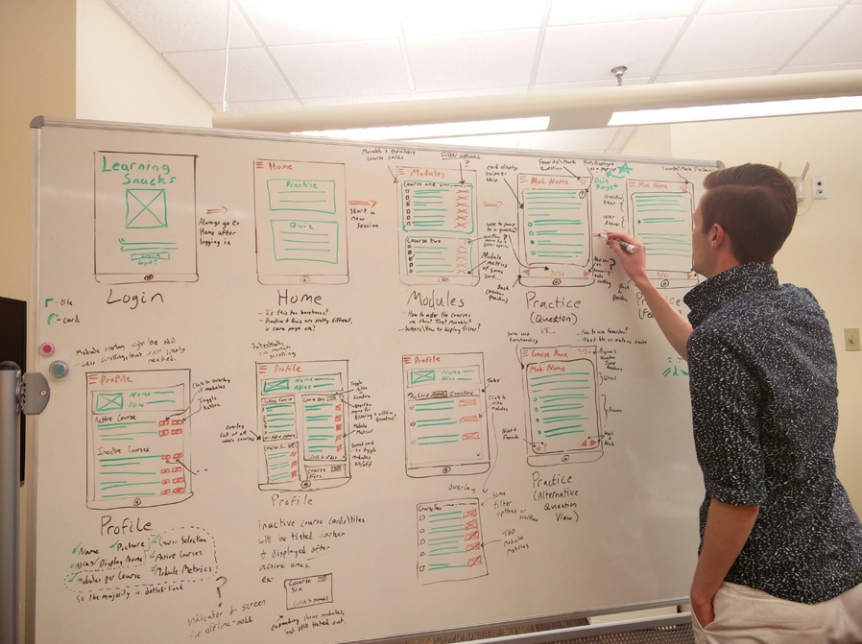User Flow
To begin our design stage, we wanted to identify the core functionality that our app should offer the user. We explicitly talked through the purpose of the app, asking important questions along the way:
- Why would users use the app?
- What do users expect to gain?
- How will users be learning within the context of the app?
- How can we maximize this experience?
This was an essential step, as listing the functionality served as a way to identify which interfaces would be needed. We were also able to see how the different core functionalities of the app could interact and be combined with one another. This was a key component of our design process, maintaining the app’s purpose in all of our design considerations.
Following this, we identified common features found across a variety of iOS and Android applications that were of a similar trivia-style, such as QuizUp and Trivia Crack. A user’s experience in the app is key in getting them to both use and learn from it. Users expect a certain level of consistency, both from mobile applications in general and ones intended for a specific purpose. To the user, our app is an educational one that asks them a series of questions. Thus, our app should behave in a similar manner, to some degree, to other applications that fit this typing. By identifying common app features, we were able to identify commonalities that we should include in our application to provide the user with a consistent and expected set of interactions.
We then combined the features that enacted the app’s purpose with commonplace app functionalities to create a base specification of user interactions. These user interactions ranged from basic functionality, such as navigating via a menu to app specific functionality, such as challenging a friend in “challenge mode”. Once we established a map of user interactions, we created a set of low fidelity screens that mapped these interactions to a specific control in the app. These screens helped us to generate a tentative user flow, allowing us to see which screens would be accessed when performing the various tasks. Mapping out a path of user interactions enabled us to identify any potential pain points or areas that could be made more efficient for the user. It was also beneficial in helping us create new screens to meet the different interaction needs that we hadn’t originally anticipated.
